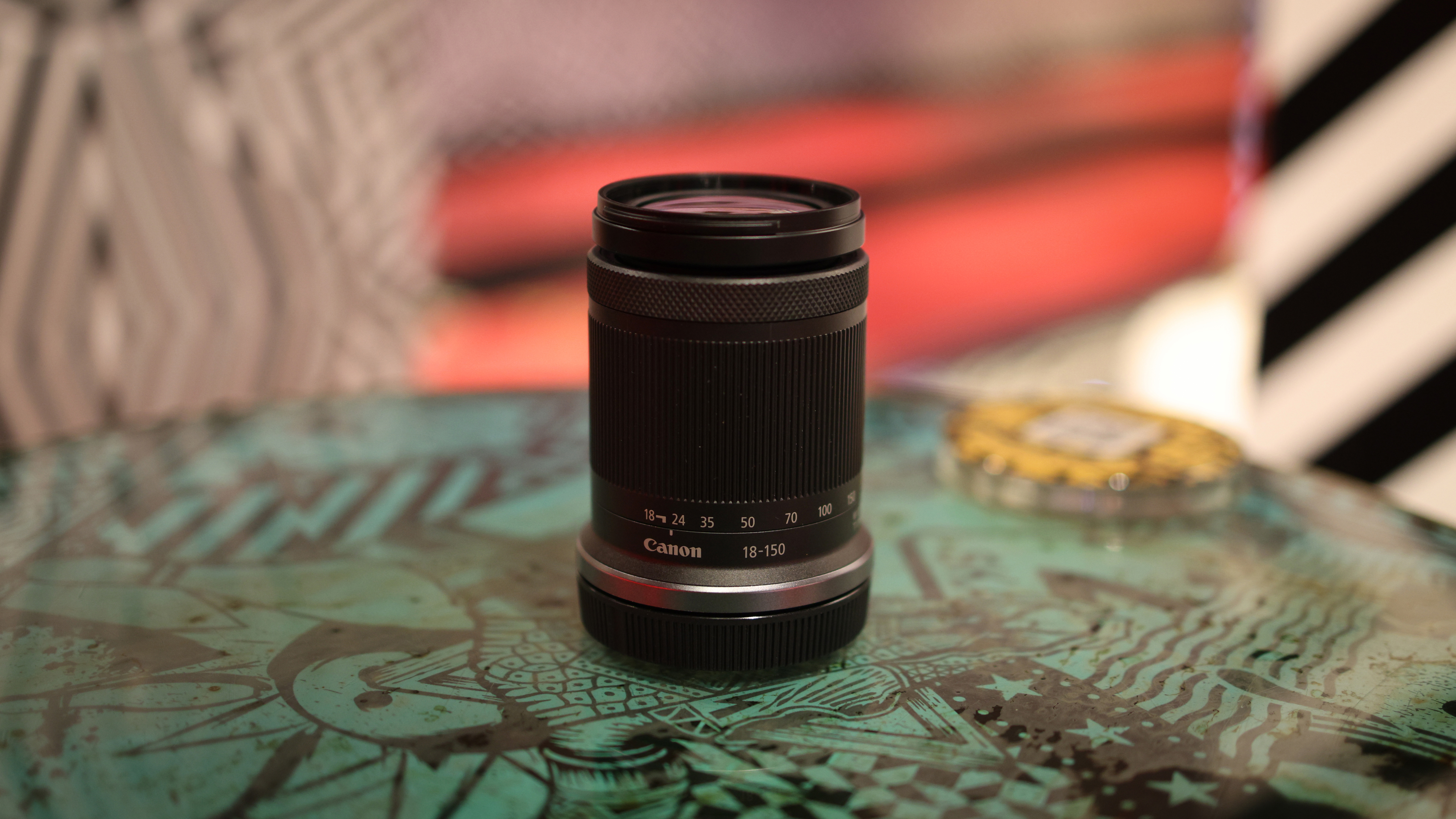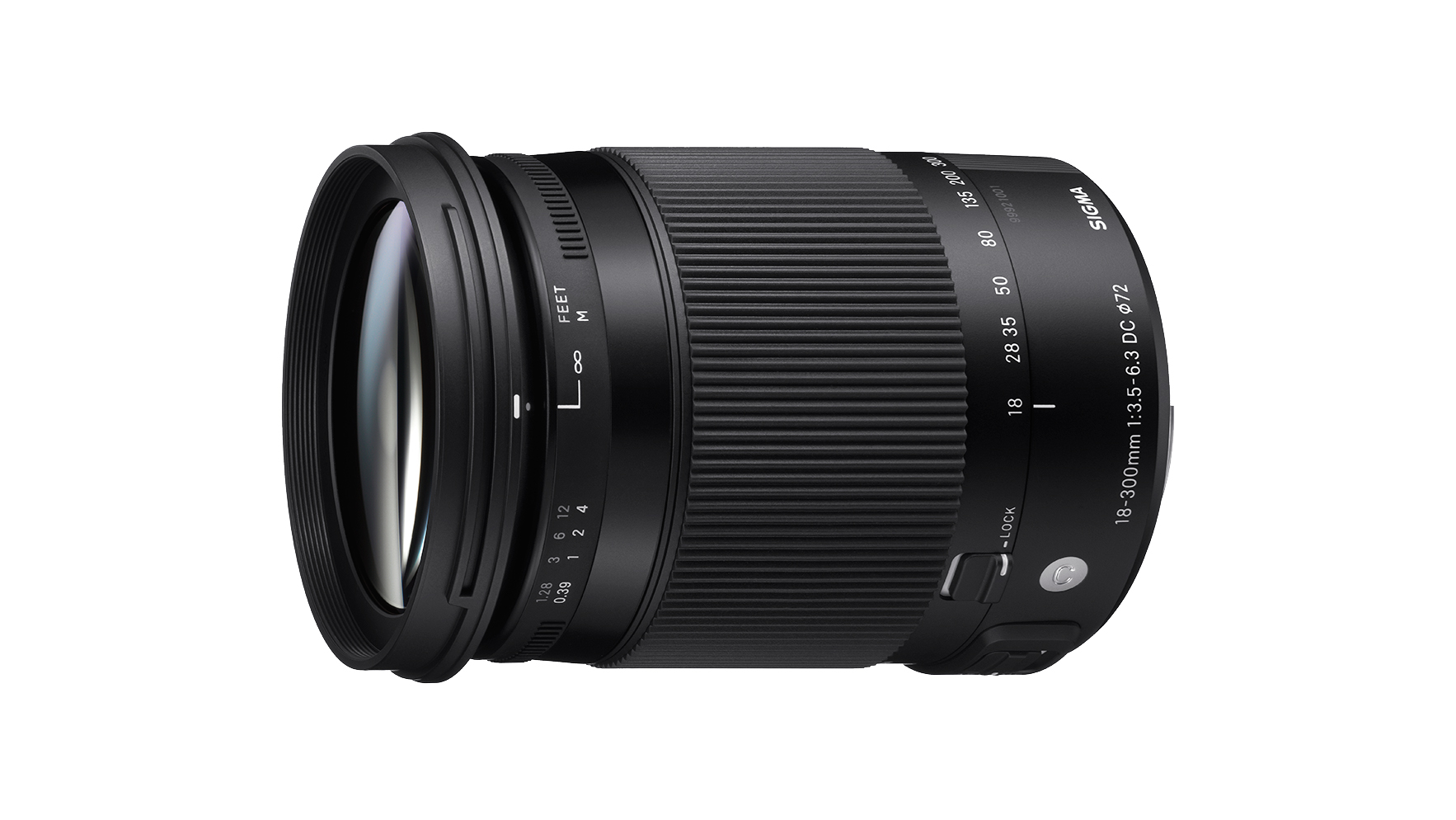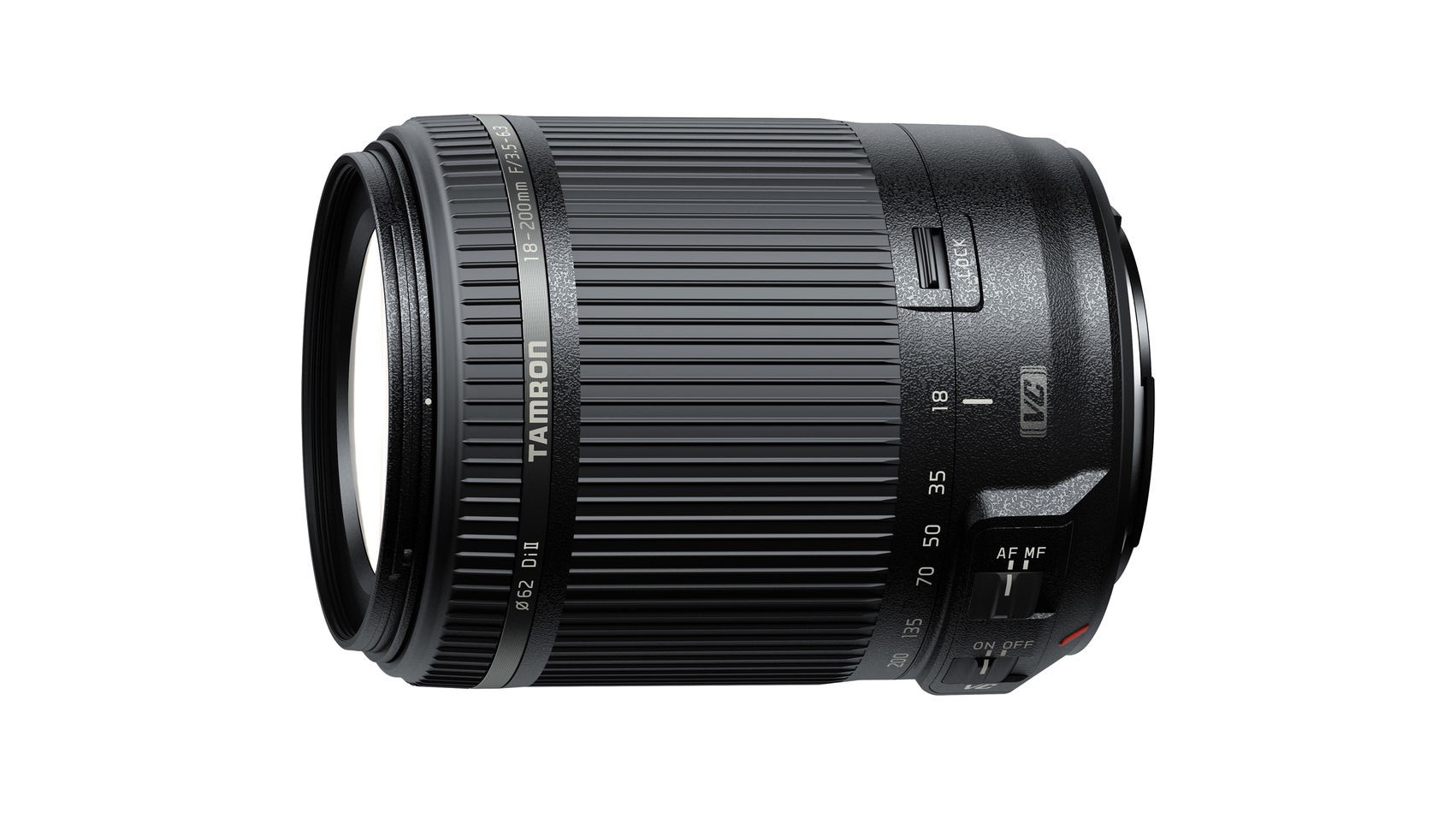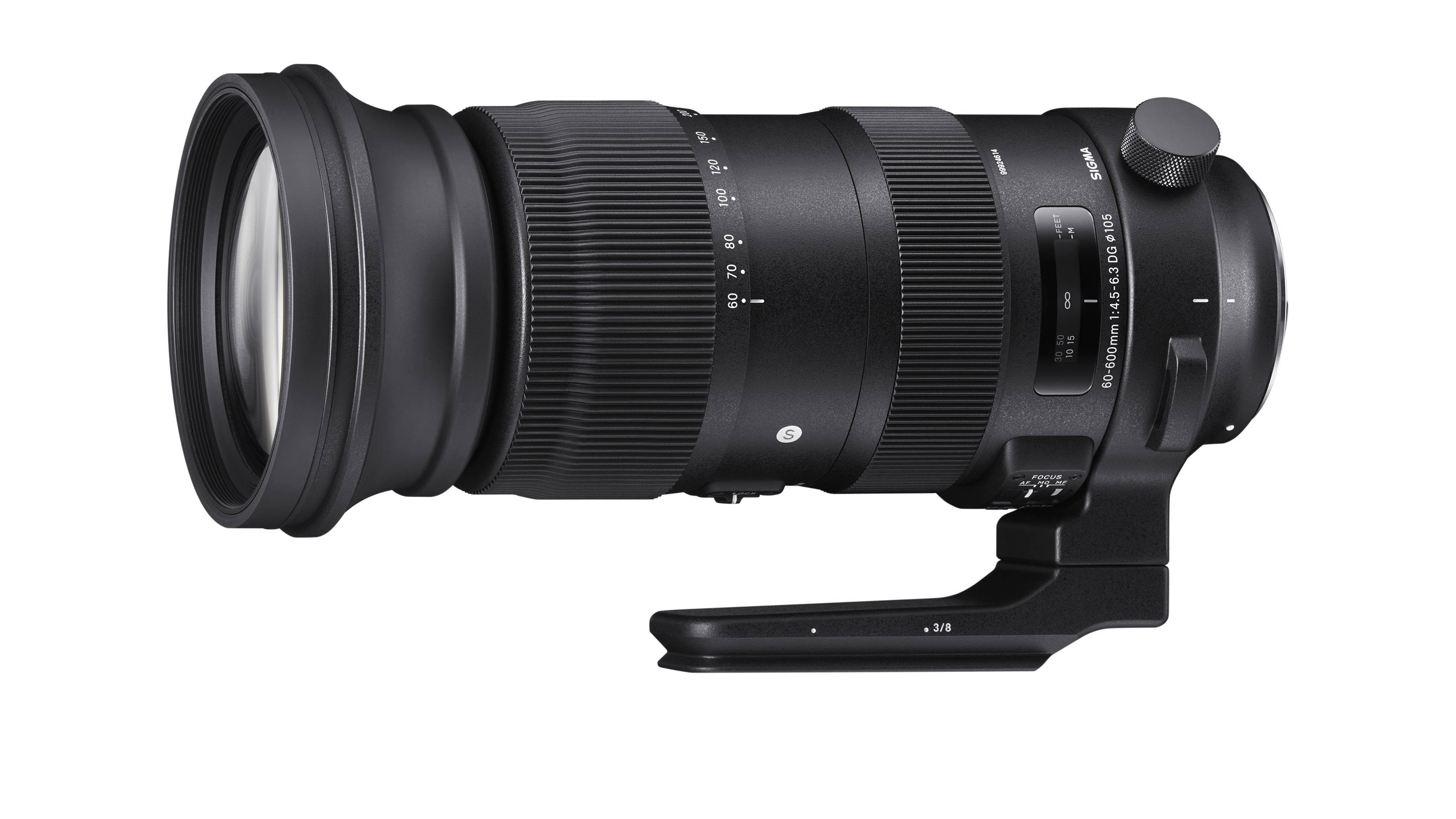The best Canon superzoom lenses: supersized zoom range for Canon DSLR and mirrorless cameras
I pick the best Canon superzoom lenses for Canon DSLRs and mirrorless cameras, ideal for travel photography and whenever you don't want to carry extra lenses.
The best Canon superzoom lenses offer you the ultimate in flexibility, a companion for every shooting situation. Versatility is the name of the game here, with lenses that cover a focal range from a wide perspective to a long telephoto. Generally, superzooms are also relatively lightweight and cost-effective, making them a good choice for travel and budget-conscious photographers.
While they typically don't offer the same kind of sharpness as high-end primes and zooms that comprise the best Canon lenses, superzooms are much better than they used to be. Here, I've picked out the finest superzooms you can get for all Canon systems, including EOS R mirrorless, EOS M mirrorless and EOS DSLRs, and I've picked options for both APS-C and full-frame cameras, where available.
The Sigma 18-300mm and Tamron 18-200mm lenses on my list in the DSLR section have been discontinued. However, I'm keeping them on the list for now as they're smart second-hand buys. For other versatile lenses that are easy to live with and aren't too heavy, check out our guide to the best lenses for travel.

Jon is one of our go-to specialists when it comes to all aspects of photography, from cameras and action cameras to lenses and memory cards, flash diffusers and triggers, batteries and memory cards, selfie sticks and gimbals, and much more besides.
The Quick List
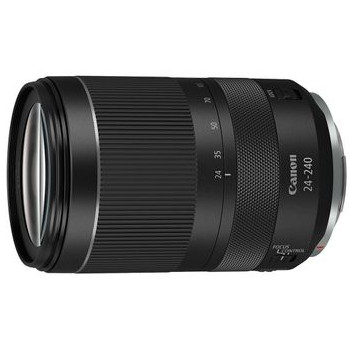
Best Canon RF
Full-frame Canon mirrorless users currently have one superzoom choice – the RF 24-240mm lens. Happily, it delivers excellent quality and fast focusing.
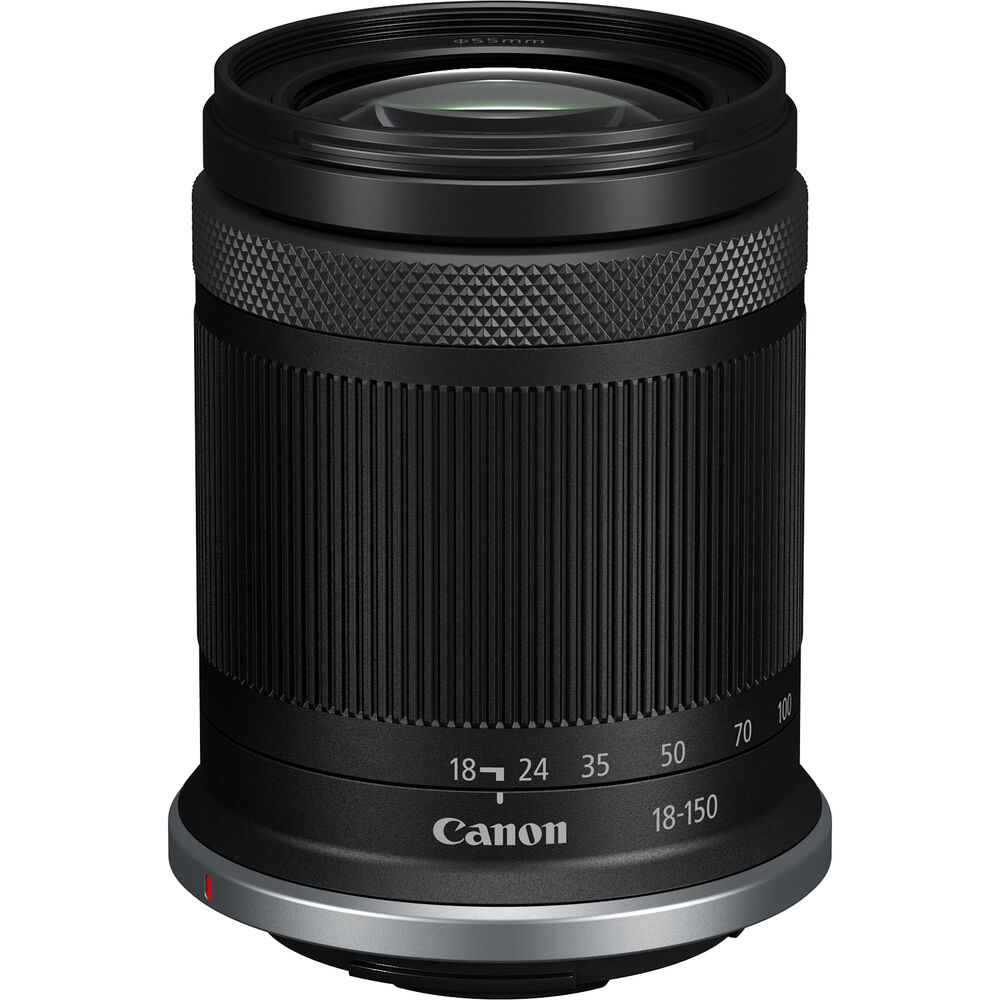
Best Canon RF-S
If you're using an RF-mount camera with an APS-C sensor, you have an additional option – the well-balanced RF-S 18-150mm lens, which can even double as a macro.
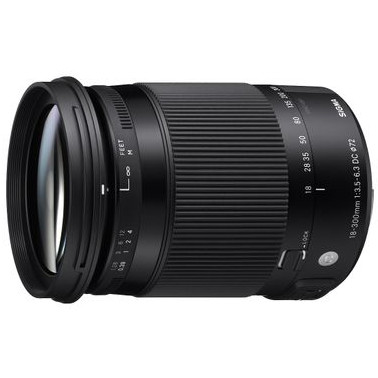
Best EF-S superzoom
Offering amazing all-out reach when mounted to a Canon APS-C DSLR, the Sigma 18-300mm incorporates FLD elements to boost sharpness even at the tele end.
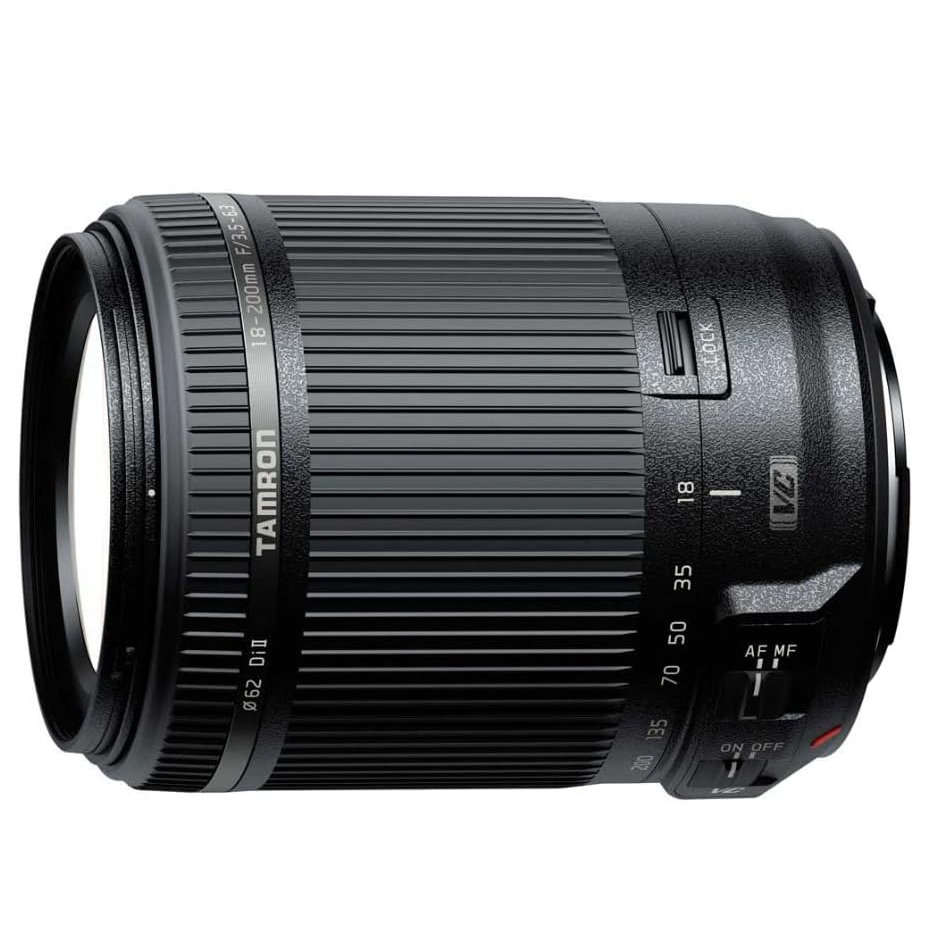
Best EF-S for travel
If you're looking for a lightweight superzoom to take on holiday, Tamron's 18-200mm is a winner. It's discontinued, but still available on the used market.
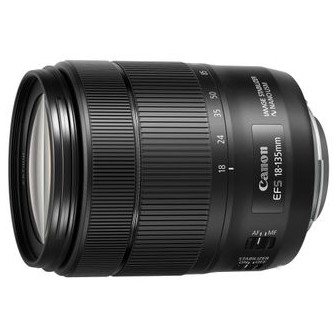
Best Canon EF-S
If you want to stick with Canon-made lenses, this EF-S superzoom is a good choice. It benefits from Nano USM autofocus, which is fast and accurate.
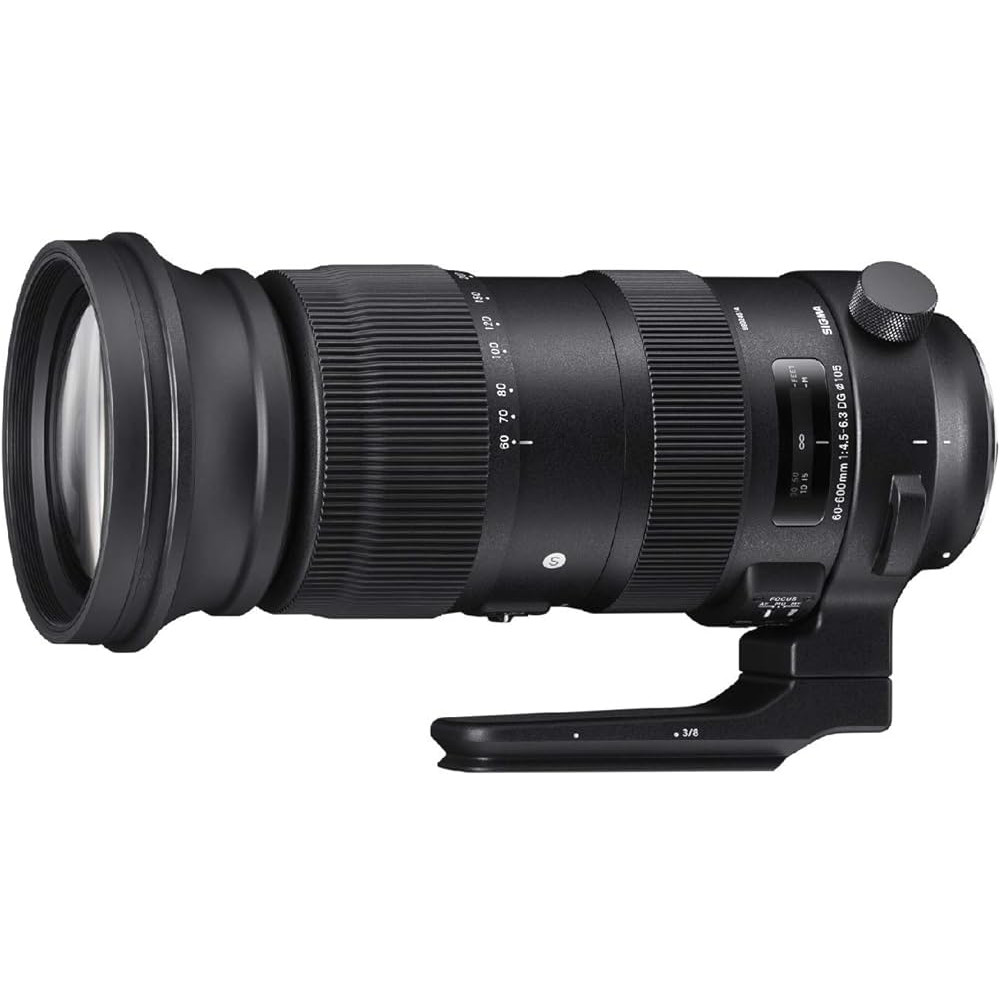
Best EF superzoom
Choice is thin on the ground for users of full-frame Canon DSLRs, but this impressive lens from Sigma is still available, and covers a dazzling range.
Load the next products ↴
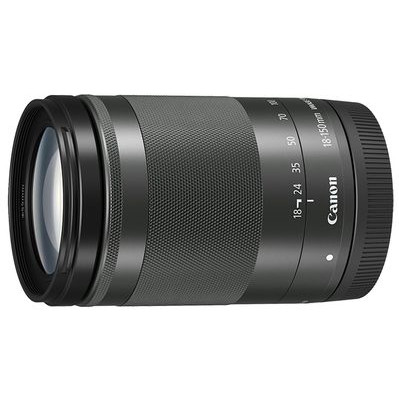
Best EF-M lens
For users of Canon EOS M mirrorless cameras, the 18-150mm lens is a solid superzoom option, with stabilisation, and still (for now) has good availability.
Best Canon superzoom lenses
Why you can trust Digital Camera World
Canon RF
Currently there's only one lens for full-frame RF-mount cameras that qualifies as a superzoom – fortunately, it's an excellent one.
RF 24-240mm
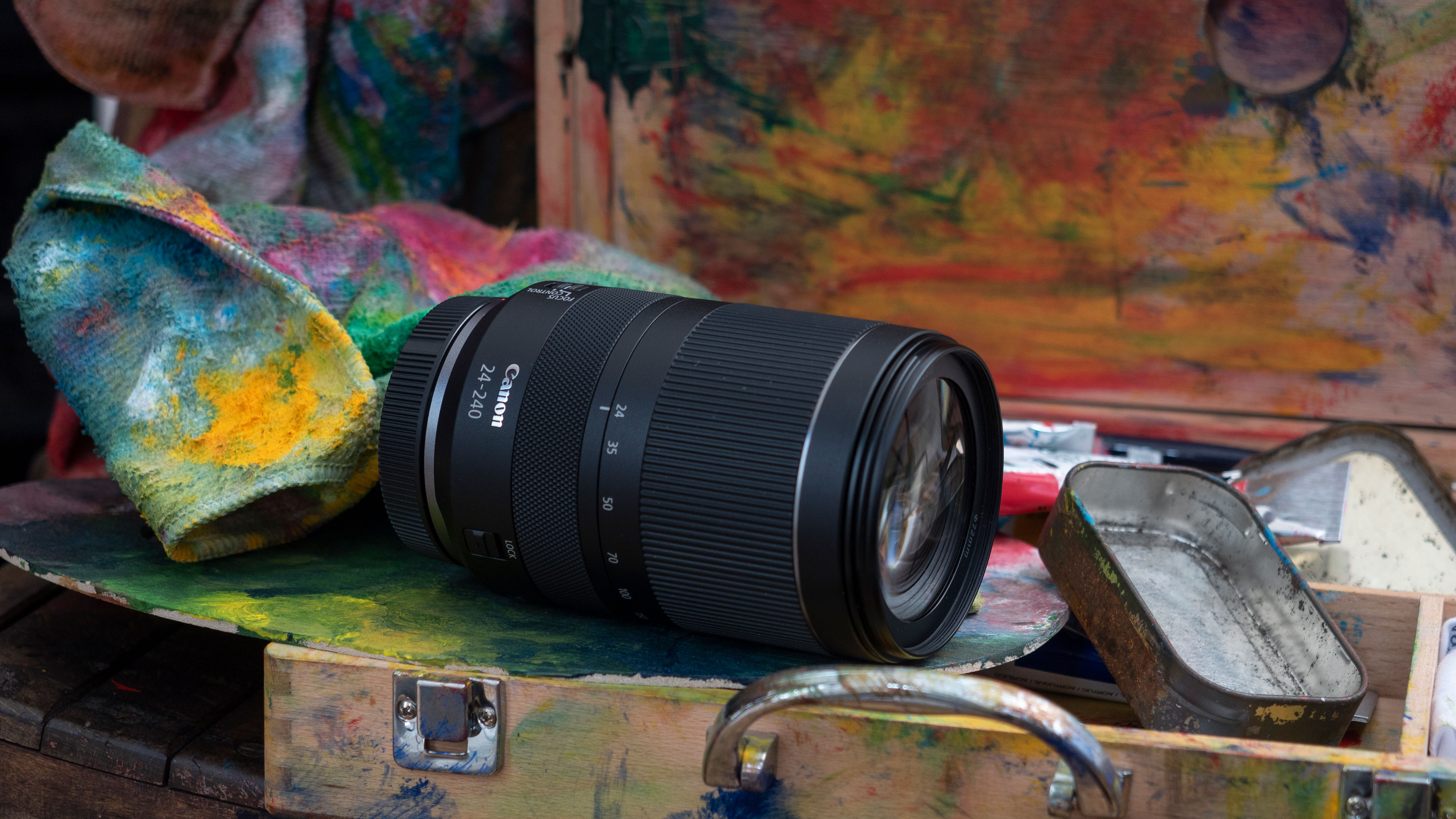
Specifications
Reasons to buy
Reasons to avoid
Users of Canon EOS R cameras demand the best when it comes to quality, which makes sense given the full-frame, high-resolution sensors they're using. With that in mind, you might think that a superzoom simply wouldn't be a suitable lens for these cameras, however the Canon RF 24-240mm f/4-6.3 IS USM delivers truly outstanding results for a lens of its type, with impressive sharpness right through its 10x zoom range. We discovered this for ourselves when we put the lens through its paces in a full review, and ended up giving it our highest rating.
You might want to be aware that some of the correction at the tele end is digital, not optical, a fact that's noticeable when you boot up Adobe Camera Raw. It's very good though, and ultimately it's results that count. And the Canon RF 24-240mm f/4-6.3 IS USM produces very good results indeed.
Read more: Canon RF 24-240mm f/4-6.3 IS USM review
Canon RF-S
Users of RF-S cameras with APS-C sensors, such as the EOS R50, EOS R100 and EOS R10, have an additional superzoom option.
RF-S 18-150mm
Specifications
Reasons to buy
Reasons to avoid
The Canon RF-S 18-150mm f/3.5-6.3 IS STM is typically sold as the kit lens for the Canon EOS R7. Its 18-150mm focal range equates to about 29-240mm in full frame camera terms, so although this lens is pretty compact and light, it actually qualifies as a do-it-all 'superzoom'. It's the ideal travel companion for APS-C cameras like the Canon EOS R7, R10, R50 and R100. It offers much greater range and a slightly faster aperture than the RF-S 18-45mm lens, and also boasts light macro capability. It performs above expectations for a kit lens and is an excellent choice for APS-C Canon EOS R cameras.
Canon EF-S
While a lot of lenses for Canon's APS-C DSLRs are being discontinued, there are still a few good options for EF-S mount, particularly if you are willing to shop second-hand.
Sigma 18-300mm
Specifications
Reasons to buy
Reasons to avoid
This Sigma goes all out for telephoto reach, equivalent to a mighty focal length of 480mm on a full-frame camera. The trade-off is that it’s noticeably bigger and heavier than some comparable lenses, at 79x102mm and 585g. The motor-based rather than ring-type ultrasonic system helps with downsizing but is a little sluggish and audible in operation. As well as aspherical and SLD elements, the addition of FLD elements really does help to boost sharpness, which only drops at the longest extremity of the zoom range.
Tamron 18-200mm
Specifications
Reasons to buy
Reasons to avoid
This Tamron lens wins points for lightness at a slender weight of just 400g, i though the autofocus speed is a little pedestrian. Sharpness is pleasingly solid considering the type of lens and price, at all equivalent zoom settings, although corner-sharpness suffers noticeably when using the widest aperture in the middle sector of the zoom range. On the plus side, colour fringing at mid-zoom settings is very negligible. This lightweight Tamron is now discontinued, but still eminently acquirable on the second-hand market – and it offers unbeatable value at the price.
EF-S 18-135mm
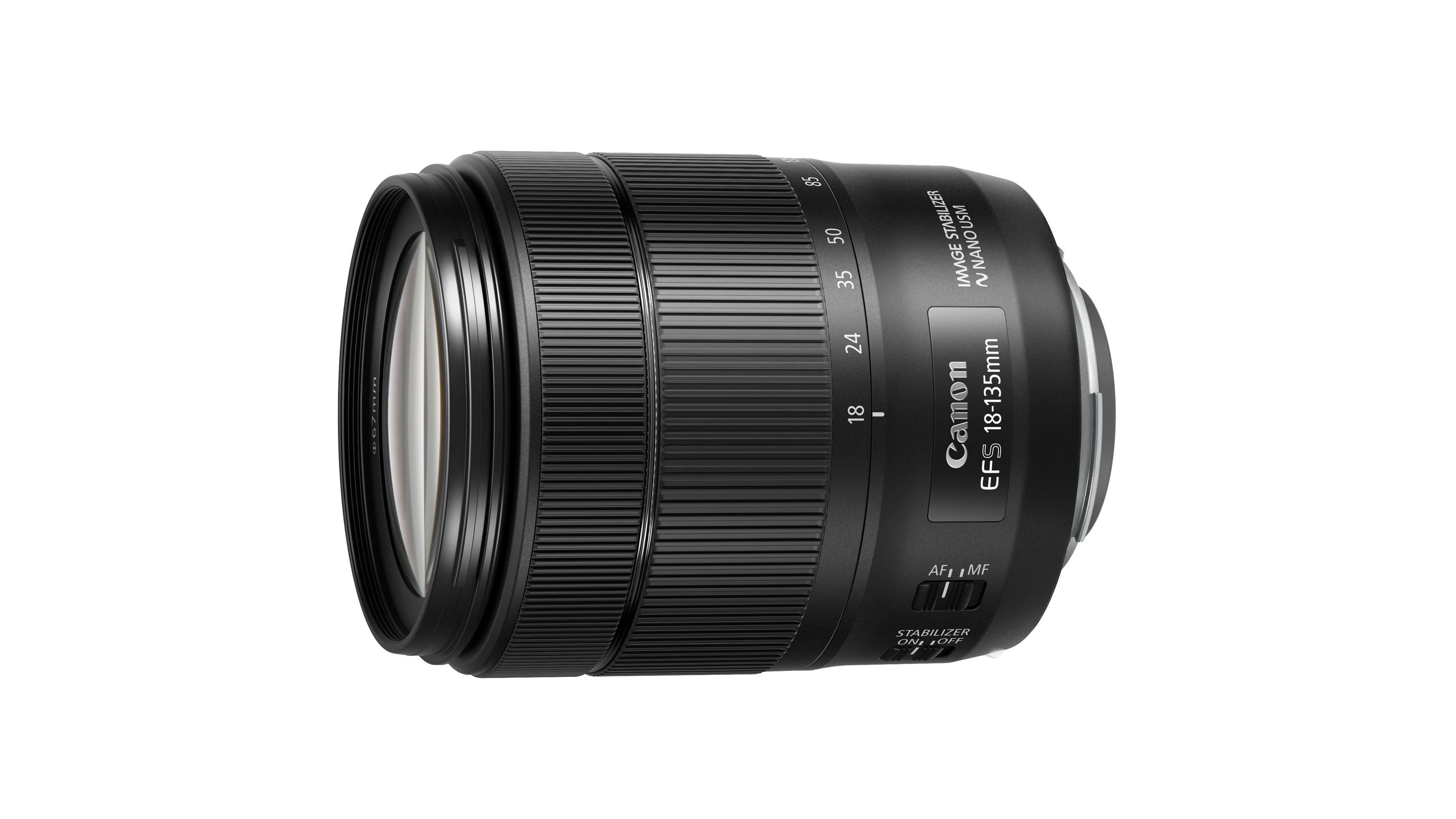
Specifications
Reasons to buy
Reasons to avoid
This Canon lens has distinctive styling, with a metal mounting plate and pleasing ergonomics that make it satisfying to use. While the previous STM edition of this lens is no slouch when it comes to autofocus speed this newer Nano USM version is incredibly fast for stills, while still maintaining smooth transitions when shooting movies. The image stabilizer is equally effective in very effective and image quality is of generally high quality. However, sharpness at the centre of the image frame proved slightly less than impressive from the new lens, at both ends of the zoom range.
See our full Canon EF-S 18-135mm f/3.5-5.6 IS USM review
Canon EF
Choices are much more limited in the Canon EF full-frame arena, with many superzoom lenses having been sadly discontinued.
Sigma 60-600mm
Specifications
Reasons to buy
Reasons to avoid
Sadly, nearly all of the full-frame EF-mount superzooms have now been discontinued, but this monster 60-600mm technically counts as a superzoom due its impressive 10x zoom. However, it is not quite the all-in-one do-it-all lens - unless of course your main subject matter is wildlife or sport.
The 60-600mm Sport is noticeably larger and nearly 40 percent weightier, at 2,700g, than Sigma’s original 50-500mm. However, all that lens gets you a massive 10x zoom range. Allowing you to swap from a standard focal length to a close-up without having to waste time swapping between lenses.
The Sigma 60-600mm Sport has high-quality optics, better than would be expected for a lens of this range, only falling off in distortion and sharpness toward the 600mm end. However, for the very reasonable price Sigma ask for this lens, which is totally forgivable.
Read our full Sigma 60-600mm f/4.5-6.3 DG OS HSM | S review for more details
Canon EF-M
Those using Canon's EOS M series still – for now – have a solid option of a superzoom lens, though with a lesser zoom range than others on this list.
EF-M 18-150mm
Specifications
Reasons to buy
Reasons to avoid
Marketed as the ideal all-in-one lens by Canon, this 8.3x superzoom doesn't quite pack the same range as the Tamron above, but it is a touch cheaper (though only just). With a full-frame focal length equivalent to 29-240mm, it's not quite as wide as we'd like, but you'll still be able to get a decent amount in the frame. Extended to 240mm and it should be handy for those occasions when you want to tightly crop in on something, but it's not going to fill the frame for those action shots. Available in black or silver, it's a compact lens that's no bigger than Canon's 55-200mm, making it a neat little travel lens.
See our full Canon EF-M 18-150mm f/3.5-6.3 IS STM review
Lab data and comparisons
The graphs below show the comparative performance of the lenses in this guide, based on our in-house lab tests. As we’re becoming used to seeing in our lab results, Canon’s RF lenses for EOS R system cameras edge ahead for sharpness, although the EF-mount Sigma zoom for DSLRs is very good for a lens with such long telephoto reach. The averages scores for distortion look good for the RF and RF-S lenses but they rely heavily on automatic in-camera correction, which can’t be disabled.
Scores for sharpness and color fringing are averaged from data taken across the entire image frame, from the center to the edges and corners, throughout the aperture range. For zoom lenses, the scores are also averaged from data measured at all marked focal lengths, and the same applies to distortion. Bear in mind that these average values don't fully reflect specific areas of performance. For example, a zoom lens might have noticeable barrel and pincushion distortion at its shortest and longest focal lengths respectively, which tends to average out when looking at the data overall. For more detailed graphs of each lens's performance, which give the full picture, check out the graphs in our full standalone lens reviews.
How to choose a superzoom lens
Something you have to be aware of when shopping for superzooms is that these lenses are not the sharpest lenses on the block. A big zoom in a small body comes with trade-offs; there are a lot of optical elements at work inside the lens in order to allow them to achieve their enormous focal range. The good ones are sharp enough – you'll get great-looking images – but if you need the ultimate in sharpness, you're best off looking at prime lenses, or at least shorter zooms.
Generally, it's worth thinking about exactly how much zoom you need. Canon's 18-135mm is a world away from Sigma's 60-600mm, and if you aren't going to need the latter then there's no sense making the kinds of compromises on weight, price
If you want a superzoom's versatility though, the good news is that you can get it no matter which Canon system you're using. There are great superzooms available for Canon's full-frame mirrorless RF mount and the APS-C mirrorless RF-S and EF-M mounts, as well as for the old EF DSLR range. Remember that EF DSALR lenses can be adapted to fit RF-mount cameras.
However, the gradual discontinuation of EF and EF-S lenses, as Canon switches its attention to developing the newer RF and RF-S mounts means that there is very little choice for each particular mount at the moment – and this will continue until the range of superzoom lenses expands for those mounts.
How we test lenses
We test lenses using a mix of both real world sample images and lab tests. Our lab tests are carried out scientifically in controlled conditions using the Imatest testing suite, which consists of custom charts and analysis software that measures resolution in line widths/picture height, a measurement widely used in lens and camera testing. We find the combination of lab and real-word testing works best, as each reveals different qualities and characteristics.
FAQs
What is a superzoom lens?
While there isn't a cast-iron definition of a focal range that counts as 'superzoom', in general the term applies to any lens with a reasonably broad focal range that runs from wide to telephoto. Generally if it's got a zoom range of at least 8x or so, a lens will count as a superzoom (and several offer much more than that).
Are superzoom lenses worth it?
Some users worry about false economy when it comes to superzoom lenses – surely this promise of so much zoom range in a lens that's both small and comparatively affordable is too good to be true? While there definitely have been cheap and nasty superzooms released over the years, there are also plenty that offer excellent sharpness and all-around performance – as demonstrated on this list.
The best camera deals, reviews, product advice, and unmissable photography news, direct to your inbox!
Jon spent years at IPC Media writing features, news, reviews and other photography content for publications such as Amateur Photographer and What Digital Camera in both print and digital form. With his additional experience for outlets like Photomonitor, this makes Jon one of our go-to specialists when it comes to all aspects of photography, from cameras and action cameras to lenses and memory cards, flash diffusers and triggers, batteries and memory cards, selfie sticks and gimbals, and much more besides.
An NCTJ-qualified journalist, he has also contributed to Shortlist, The Skinny, ThreeWeeks Edinburgh, The Guardian, Trusted Reviews, CreativeBLOQ, and probably quite a few others I’ve forgotten.
